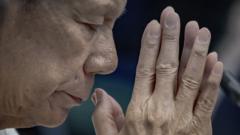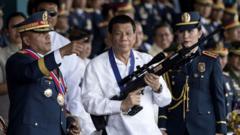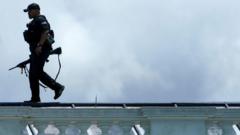The recent shooting of Andrés Bracamonte, the notorious leader of the Rosario Central football hooligans, has sent shockwaves throughout the Argentine sports community. Known as "Pillín," Bracamonte was gunned down near the Gigante de Arroyito stadium, underscoring the dangerous intersection of sports and crime in the region.
Football Hooligan Storm: Notorious Leader Gunned Down in Rosario

Football Hooligan Storm: Notorious Leader Gunned Down in Rosario
A violent chapter in Argentine football culture reaches a tragic climax with the assassination of gang leader Andrés Bracamonte.
Bracamonte, 52, had been the head of the supporters’ gang for over two decades, involved in numerous violent clashes with rival groups. He and his deputy, Daniel "Rana" Atardo, were attacked by a motorcyclist just four blocks from the stadium after a league match—one that Bracamonte had been barred from attending due to his criminal history.
Authorities had previously accused Bracamonte of serious offenses including money-laundering and extortion. His long-standing ties with the notorious drug cartel Los Monos further complicated his legacy. The brutal nature of his death has been interpreted by many as a result of ongoing turf wars within the world of football hooliganism.
Bracamonte had survived an assassination attempt just a month prior when he was shot at while with a partner, highlighting the intense rivalry and violent atmosphere entrenched in fan culture. His killing has reignited discussions about the influence of organized crime within Argentine football and the governance that surrounds it.
As the investigation unfolds, the potential repercussions for the supporters’ culture and the measures to address the rampant violence remain uncertain. The chaotic blend of sport and crime continues to challenge authorities in Rosario and across Argentina.
Authorities had previously accused Bracamonte of serious offenses including money-laundering and extortion. His long-standing ties with the notorious drug cartel Los Monos further complicated his legacy. The brutal nature of his death has been interpreted by many as a result of ongoing turf wars within the world of football hooliganism.
Bracamonte had survived an assassination attempt just a month prior when he was shot at while with a partner, highlighting the intense rivalry and violent atmosphere entrenched in fan culture. His killing has reignited discussions about the influence of organized crime within Argentine football and the governance that surrounds it.
As the investigation unfolds, the potential repercussions for the supporters’ culture and the measures to address the rampant violence remain uncertain. The chaotic blend of sport and crime continues to challenge authorities in Rosario and across Argentina.




















